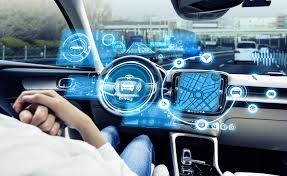
The rise of autonomous vehicles is transforming transportation—but it’s also set to redefine the car insurance industry. As cars become capable of driving themselves, the traditional model of liability and risk assessment faces major changes. Understanding these shifts is crucial for drivers, insurers, and policymakers alike.
1. How Driverless Cars Change Risk
Self-driving cars rely on advanced sensors, cameras, and AI to navigate traffic. While this technology promises to reduce human error, it introduces new types of risk:
- Software failures or glitches
- Cybersecurity threats, including hacking or ransomware attacks
- Liability in multi-car accidents involving autonomous vehicles
This shift means that insurance may move away from the driver as the primary risk factor and focus more on vehicle manufacturers, software developers, and tech providers.
2. Liability Shifts
In a driverless world:
- Human drivers may no longer be at fault in most accidents.
- Manufacturers and tech companies could bear a larger share of liability for malfunctions.
- Insurers will need to reassess policy structures, possibly covering a combination of driver, vehicle, and software risks.
This represents a fundamental change in how premiums are calculated and who is responsible for accidents.
3. Changes in Premiums
Driverless technology is expected to reduce accidents overall, which could:
- Lower premiums for personal auto insurance in the long term.
- Shift insurance toward product liability coverage for manufacturers.
- Create tiered policies depending on autonomy levels (e.g., semi-autonomous vs. fully autonomous vehicles).
Some insurers are already experimenting with usage-based and software-focused policies in anticipation of widespread adoption.
4. Cybersecurity and Insurance
With connected vehicles, cyber risks become a critical concern:
- Hacked vehicles could cause accidents, theft, or even intentional harm.
- Insurers may offer cyber coverage as a standard part of autonomous vehicle policies.
- Regular software updates and safety audits could influence premiums.
This is a major departure from traditional auto insurance, which focuses almost entirely on driver behavior.
5. The Road Ahead
The transition to a driverless world is gradual, but insurers are preparing:
- Data-driven policies: AI will analyze driving data to optimize risk assessment.
- Partnerships with manufacturers: Collaborations to share liability and manage claims.
- Regulatory updates: Governments will create rules to define fault and liability for autonomous vehicles.
By adapting early, insurance companies can remain relevant in a rapidly evolving landscape.
Final Thoughts
The era of autonomous vehicles will reshape car insurance from the ground up. While accidents may decline, new risks like software failure and cyber threats will redefine liability. Both drivers and insurers must be prepared for a future where technology—not human error—is at the wheel.